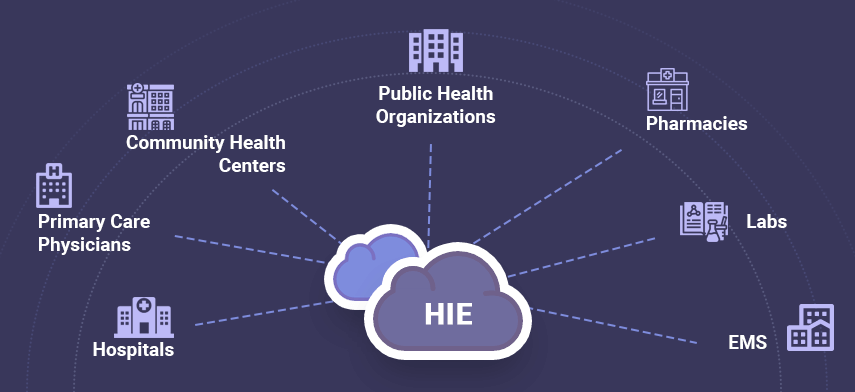Technological advancements in the healthcare industry continue to provide new ways to improve the quality of care delivered to the patients while advancing the state of the global digital healthcare system. Information technology has significantly contributed to the healthcare industry with the increasing use of telehealth services, electronic medical records, and mobile technologies.

Additionally, the demand for electronic health information exchange is surging among healthcare professionals owing to the increasing demand for an efficient healthcare system. A recent study published in the Journal of the American Medical Informatics Association showed that the patient data transmitted through Health Information Exchange (HIE) doesn’t solely depend on the technical aspects but also depends on the policies facilitating data exchange. Hence, most of the countries are focusing on introducing new policies for data exchange through their HIE systems.
There are several benefits of health information exchange which we will deep dive in this blog article. But first, let’s understand the basics of health information exchange (HIE).
What is Health Information Exchange?
Health information exchange helps doctors, nurses, patients, pharmacists, and others to seamlessly exchange vital medical information electronically with better quality, speed, security, and cost. Various companies are building HIE software that enables health information exchange using various standards. For instance, some HIEs are run by private companies, while some are run by the state governments. Meanwhile, some states even have multiple HIEs within the state.
The growing patient-centric approach, increasing EHR adoption, and increasing focus on curtailing the healthcare costs are some of the factors driving health information exchange market globally.
Countries across various regions are focusing on developing a better and safe infrastructure for health information exchange. According to the Office of National Coordinator of Health IT, in the US there are more than 100 regional HIEs, an increasing number of healthcare organizations are joining multiple HIEs to gather information on patients. Meanwhile, in the low and middle-income countries, lack of access to resources that accelerate the establishment of procedures and policies are hindering the HIE implementation process.
Read More: Health Information Exchange (HIE)